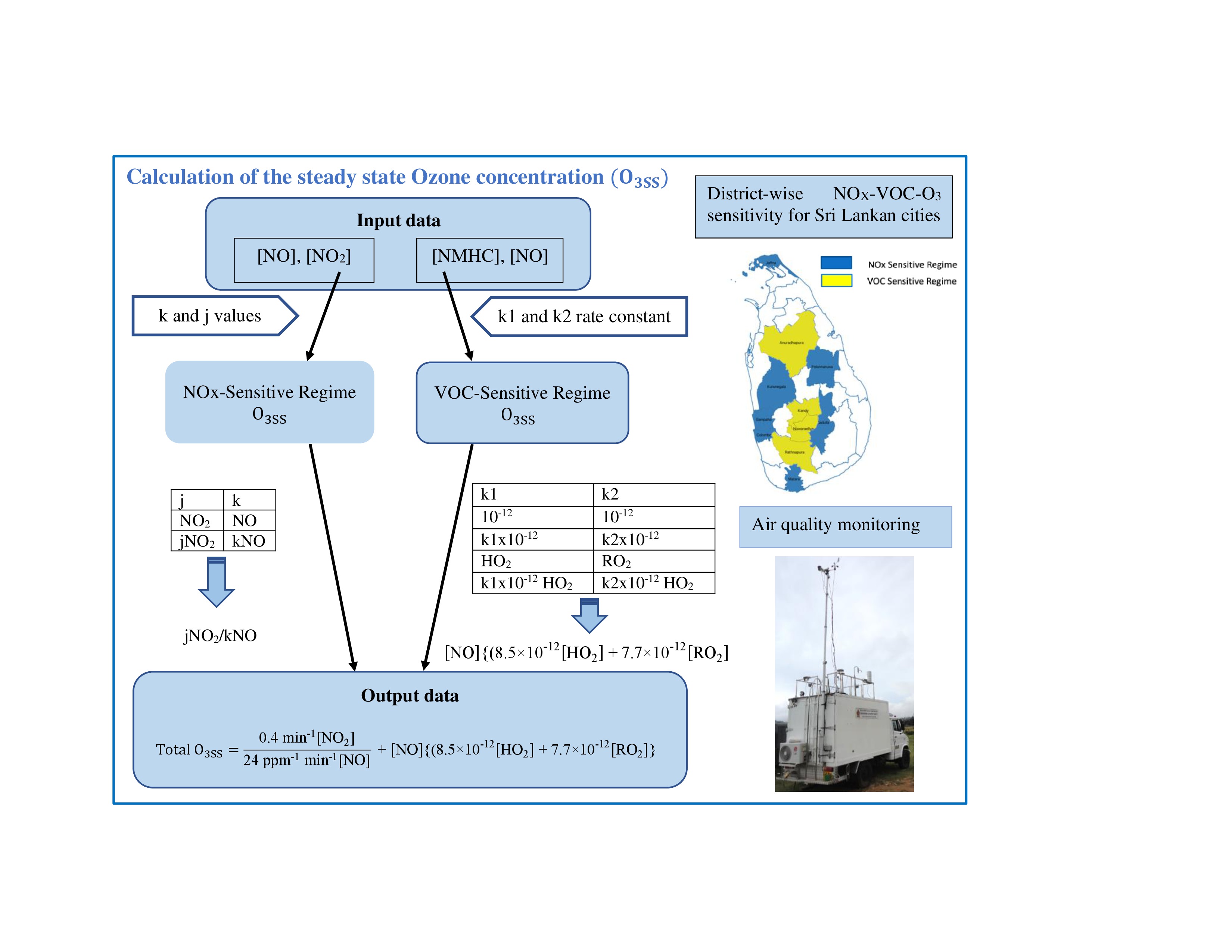Modeling of Ground -Level Ozone Formation in Urban Air-sheds of Sri Lanka

|
Supervisor: Dr. A.G.T. Sugathapala, Dr. M.M.I.D. Manthilake, Prof. S.C. Lee Department: Mechanical Engineering Faculty: Engineering Physical phenomenon of the relation among ground-level ozone (O3), oxides of nitrogen (NOX) and volatile organic compounds (VOC) is governed by complex nonlinear photochemistry. To predict and control O3 concentration, it is vital to know, how O3 concentration changes in response to prescribed changes in source emissions of NOX and VOCs. In this research, a theoretical model was developed and validated for ground-level O3 formation in urban air-sheds of Sri Lanka. |
|
|
Hourly averaged weekly results of ambient pollutant concentration data of eleven cities in the base years 2013, 2014, and 2015 in Sri Lanka were assessed and an urban air shed model was developed. Results confirm that there exist two regimes of NOX-VOC-O3 sensitivity as NOx- sensitiveregime and VOC-sensitiveregime. The urban air-shed model is capable of estimating the ground-level steady state ozone concentration (O3ss) and contributions from each regime. The univariate linear regression model using predicted and observed O3 values confirmed that O3ss concentration was significantly correlated with the predicted O3 concentration.
Abstract An Initiative by MoraMinds Follow us on Twitter @uomresearcher
|
||


